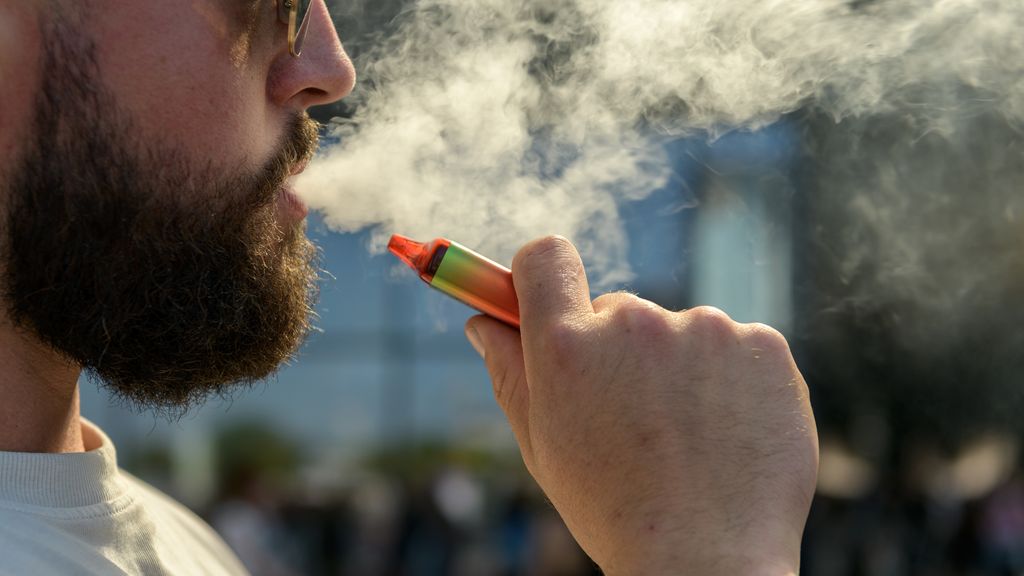
This article was last updated on September 4, 2024
Canada: ![]() Oye! Times readers Get FREE $30 to spend on Amazon, Walmart…
Oye! Times readers Get FREE $30 to spend on Amazon, Walmart…
USA: ![]() Oye! Times readers Get FREE $30 to spend on Amazon, Walmart…
Oye! Times readers Get FREE $30 to spend on Amazon, Walmart…
Table of Contents
No rules for vapor from vapes: ‘No insight at all into what you ingest’
Vapes can produce impressive clouds of smoke. But no one knows exactly what is in that smoke. The vapor from vapes is not tested. The Dutch Food and Consumer Product Safety Authority (NVWA), which enforces the rules for vapes, confirms this to NOS on 3.
No testing is done because there are no legal standards for vape vapor. “That is really a loss,” says tobacco researcher Esther Croes of the Trimbos Institute. “Because I think it is very necessary that we determine which e-cigarettes exceed a certain standard.”
At the moment, the NVWA only tests the liquid and packaging of the vape. There are legal standards for this. But heating the vape liquid can produce all kinds of harmful substances, Croes emphasizes.
“A well-known example is that very small particles of heavy metals can end up in the vapor from the device itself. And above a certain limit, those heavy metals are harmful to many organ systems. Certainly also for children, for the growing brain, it can be cause disruptions.”
Lead, cadmium and uranium have been found in the urine of children.
pulmonologist Wanda de Kanter
Wanda de Kanter, pulmonologist and chairman of Smoking Prevention Youth, is also concerned. “What we know from abroad is serious. Lead, cadmium and uranium have even been found in the urine of children.”
Vapes seized from Dutch schools contained all kinds of dangerous substances found, RTL Nieuws discovered earlier this year. According to De Kanter, these vapes contain a “sky-high” nicotine content. In addition to being addictive, nicotine is also harmful to health, especially for young people.
That investigation often involved illegal vapes. But the composition of the vapor is also unknown for legally sold vapes.
Turbo vape
The lack of regulations allows the manufacturer to significantly increase the nicotine content in the vape. For example, the American manufacturer Juul did this. In the US, their vapes contain a very high concentration of nicotine.
In 2018, Juul also launched its vape in several European countries, with a lower concentration of nicotine. But in 2019, the vape refills were quietly adjusted to what the company called a ‘turbo’ variant. The ‘weaker’ liquid is heated extra quickly, so that the vapor still contains almost as much nicotine as in the American model, without the company breaking the law.
Such a high nicotine concentration makes the vapes extra addictive, says tobacco expert Croes. “The higher the concentration, the faster it is absorbed into the brain and the greater the addictive effect.”
It is striking that the vape vapor is not checked. Rules have been established for many other aspects of vapes. For example, they may not be sold to minors and may not be advertised.
Because vapes are very popular among young people, there has been a ban on flavors since January 1 and online sales have also been restricted. The nicotine content is also regulated: a vape may contain a maximum of 2 milliliters of liquid (e-liquid), and that liquid may contain a maximum of 20 milligrams of nicotine per milliliter.
Every year the NVWA tests about 100 to 150 vapes and e-liquids. In 2023, a vape was found 22 times with a nicotine concentration that was too high.
Rules for cigarettes
For ‘normal’ cigarettes there are standards for the amount of harmful substances in the smoke. “The difference is that with a cigarette you know approximately how it is smoked,” Croes of the Trimbos Institute explains.
“A smoker takes an average of thirteen puffs, we know how deeply someone inhales, etc. But with vapes this is still unclear. Some users occasionally take one puff, others more, there is a lot of variation. Also because the concentrations differ enormously. That doesn’t make it easily comparable to a cigarette.”
Most electronic cigarettes also contain a different form of nicotine than tobacco cigarettes. This makes them easier to smoke. The nicotine is also absorbed faster.
“No one has the money and manpower to do or maintain such tests,” says pulmonologist De Kanter. “You have to test so many variables. The easier option would be to ban all disposable e-cigarettes in the first place.” A motion for this was recently adopted in the House of Representatives.

Be the first to comment